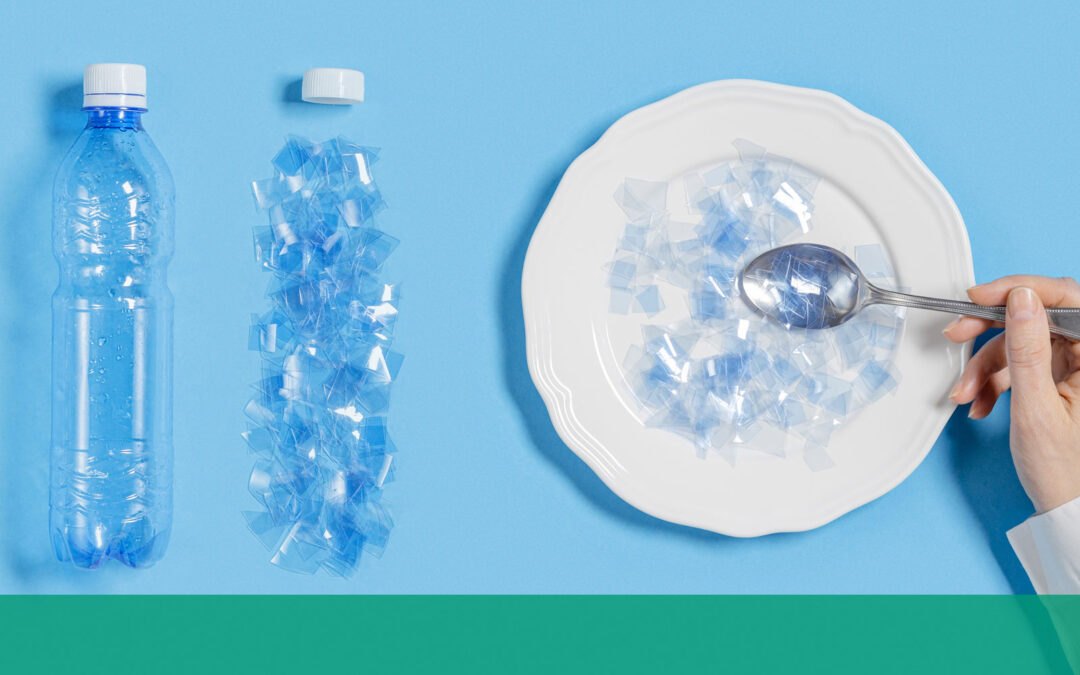When I introduce people to the gut microbiome, I begin by sharing that microbes, such as bacteria, are everywhere. They are not something we can isolate ourselves from. They have been found in the depths of the Mariana Trench and the heights of Mt. Everest. But what I haven’t realized until recently, is that microplastics have been found there, as well. Sadly, the human body has not escaped its infiltration.
In the Netherlands, blood was analyzed from 22 anonymous, healthy adults, and microplastic was detected in 17 of them. Babies fed via plastic bottles had stools with at least ten times higher levels of microplastics, compared with adults, revealing that they’re swallowing millions of microplastic particles from the bottle.1 Microplastics have been observed in human lungs,2 and sadly, even human placenta tissue has been contaminated. But what I find even more tragic is that these microplastics can reach the brain.3
As we touched on last month, our ingestion of microplastics can come from a variety of sources, including water from plastic water bottles. Drinking bottled water is estimated to increase the microplastic ingestion “an extra 90,000 particles compared to those who solely drink tap water (ingesting only 4,000 extra particles).4 Fish are contaminated from the water they swim in, and we, in turn, eat them. Even the air we breathe can be laced with microplastics in certain environments. It is estimated that the average human ingestion of microplastic is about 0.1–5 grams per week. The majority of plastics are primarily made from fossil fuels, and so far, no beneficial function for them in the human body has been observed. In fact, while ongoing research is being conducted to assess how the microplastics within us are affecting our internal functions, here are some interesting findings to get us started:
Red blood cells deform in the presence of microplastic. “Microplastics stretch the membranes of human red blood cells and greatly reduce their mechanical stability, which can affect their proper functioning and alter, for example, their ability to transport oxygen.”5
Researchers speculate that “Humans may experience oxidative stress, cytotoxicity, neurotoxicity, immune system disruption, and transfer of MPs (microplastics) to other tissues after being exposed to them.”6 These foreign invaders can be taken up by cells—potentially disrupting biochemical communication within the cell, alter our immune system function, and damage our tissues and organs.7
The fact that researchers are seeing the capability of microplastics to cross the blood/brain barrier is alarming. In her research with mice, Jaime Ross, PhD, and her team found accumulation of microplastic particles in every organ within three weeks of drinking microplastic-contaminated water. And the brain was no exception. As a result, observed changes included inflammation and reduced brain protection.8
We are not going to escape microplastics completely any time soon—maybe never. High levels of contamination are seen in the polar regions, where arctic ice algae is littered with microplastics. Even fresh Antarctic snow contains microplastics. So the question becomes: How can we reduce the microplastics within?
That will be our topic next month.
1. The Guardian, “Microplastics found in human blood for first time,” March 2022.
4. National Library of Medicine, “Impact of microplastics on immunity,” September 2022.
5. Eurekalert.org, “Microplastics can deform cell membranes and affect their functioning,” August 2021.
7. National Library of Medicine, “Impacts of microplastics on immunity,” September 2022.


